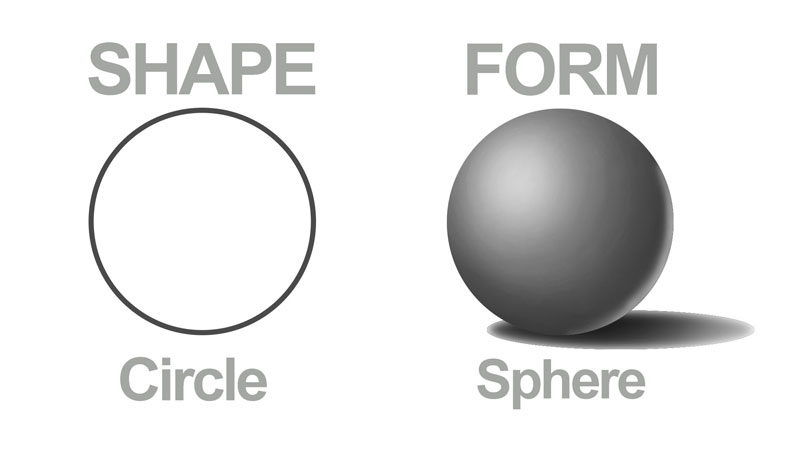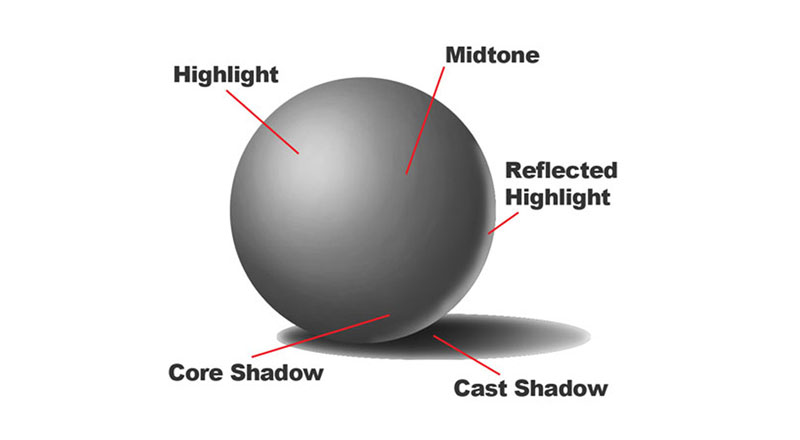One of the most fundamental principles of drawing is the process of shading. If we are to create the illusion of form and light within a scene, then we must be able to shade forms accurately.
Complex forms can present their own set of difficulties. But just as complex subjects can be broken down into simple shapes, complex forms can simplified into basic forms. If we have a strong understanding of how basic forms should be shaded, then we have a much better chance of adding accurate shading to complex forms.
In this fundamental drawing lesson, we'll take a look at shading basic forms. We'll start by drawing basic shapes and then transform those shapes by developing the value (shading) to create the illusion of forms.
Shapes are defined as enclosed lines. Most of us are very familiar with geometric shapes - circle, square, triangle, etc. Most of the subjects that we draw however, are made up of organic shapes. These more complex, organic shapes can be simplified into basic geometric shapes. So we should not overlook the importance of drawing basic shapes.

We clearly live in a world of forms - not shapes. Therefore, we must take things a bit further in our drawings if we expect to create the illusion of form. The first step to accomplishing this is knowing how to transform basic shapes into basic forms.
The key to creating this illusion is to add a range of value to our basic shapes. Of course, we commonly call this process "shading".
The location of values on our subject communicate the location and strength of the light source. In turn, this creates the illusion of form.

Simple shapes become more complex through the application of value and shadow. Therefore, a circle becomes a sphere, a square becomes a cube, and a triangle becomes a pyramid. These are the basic forms that make up the complex objects that we draw.
Drawing is about seeing. Learning to draw is actually about learning to see. There are many ways to see objects as an artist would. If your goal is to create representational drawings, you may choose to look at objects as shapes. In fact, any object that you may draw can be broken down into simplified shapes. By learning how to determine which shapes to draw and how to construct complex forms from shapes, you will naturally become better at drawing.
If we are to approach drawings as a collection of shapes, then we must be prepared to create an illusion of form from the shapes that we draw. Therefore, it is important that we are able to transform flat two dimensional shapes into three dimensional forms, resulting in the illusion of form.
By practicing drawing shapes and transforming them into forms through value, we gain a better understanding of the fundamentals of drawing.